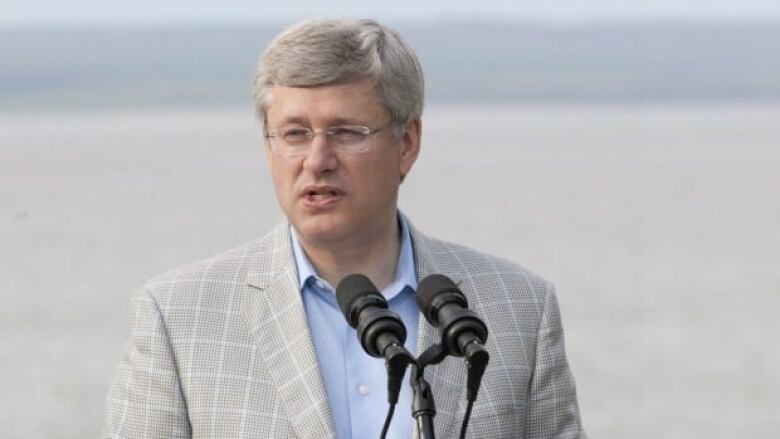5 things to know about devolution in the N.W.T.

The Northwest Territories is expected to get a final devolution agreement Monday, which will give the territory control over its Crown lands and resources.
Prime Minister Stephen Harper will visit Yellowknife Monday, and he is expected to make the historic announcement.He will be joined by N.W.T. Premier Bob McLeod, Bernard Valcourt, the Minister of Aboriginal Affairs and Northern Development, and Leona Aglukkaq, who is the minister responsible for the Canadian Northern Economic Development Agency.
Aboriginal leaders from the five groups who have signed on to the agreement-in-principle are also scheduled to appear at the ceremony.
There will be a public event at the Legislative Assembly, starting around noon local time.
The idea of devolution isn't new. In fact, Yukon signed a similar agreement in 1993.
Here are five things to know about devolution:
1. What is N.W.T.devolution?
Right now, Ottawa owns almost all the public land and waters in the territory. The federal government makes the final decisions on the development of resources such as oil and gas, and mines, and keeps almost all of the money companies pay to develop the resources (resource revenue).

The devolution agreement being negotiated will transfer control of public land and resources to the N.W.T. The territory will make the decisions about resource development and will keep 50 per cent of resource revenue, up to an annual limit of about $60 million.
In the agreement-in-principle, the federal government agrees to provide one-time transition costs andannual money to fund the territorys land and resource management programs, and to transfer all existing federal northern development department assets such as buildings and building leases.
2. Where will thisresource revenue money go?
The N.W.T. has committed up to a quarterof its share of resource revenue to aboriginal governments that sign on to the final devolution agreement.The N.W.T.s fiscal responsibility policy pledges to use the rest for paying down debt and investing in infrastructure rather than for day-to-day operating expenses.
3. Which aboriginal governments have signed on to devolution?
The Northwest Territory Mtis Nation, the Inuvialuit Regional Corporation, the Sahtu Secretariat, the Gwichin Tribal Council and the Tlicho government. The Akaitcho Territory government and the Dehcho First Nations have not.
4. Does this transfer of ownership include offshore oil and gas resources?
No.The federal government will keep ownership of offshore resources. But the agreement-in-principle commits Canada to begin negotiating offshore resource revenue sharing with N.W.T. within 60 days of the signing of a final devolution agreement.
5. What will be different after devolution?
Besides having decision-making power over lands and resources and a new source of revenue, the territory will inherit about 175 federal Aboriginal Affairs and Northern Development employees based in N.W.T. whose jobs are affected by devolution. The GNWT will likely also need to hire more people to handle tasks that were done for these Aboriginal Affairs and Northern Development workers by other federal departments.
With files from The Canadian Press












_(720p).jpg)


 OFFICIAL HD MUSIC VIDEO.jpg)
.jpg)



























































































